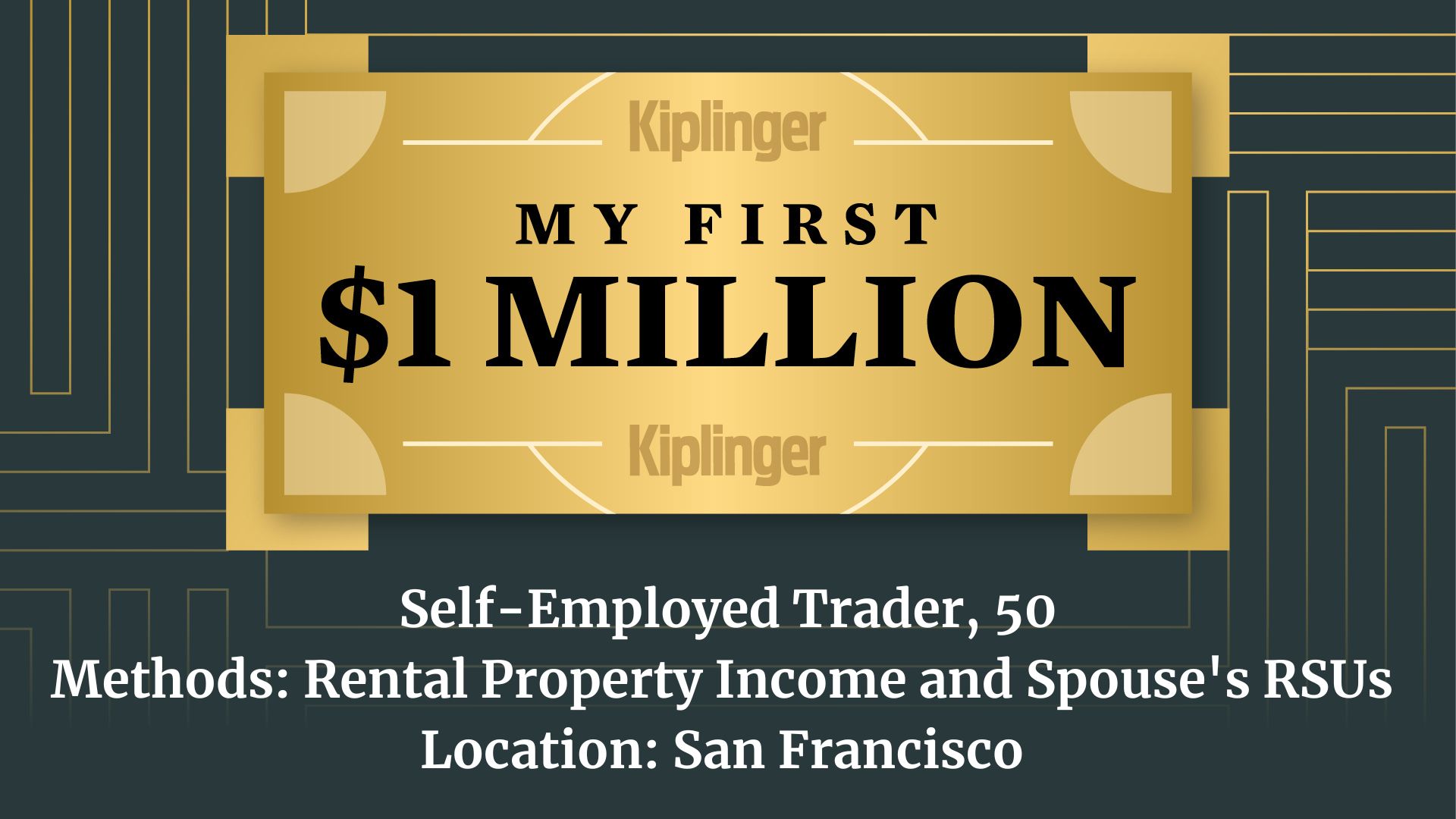Amazon’s Prime Day Faces Tariff Troubles: What Shoppers Need to Know
Amazon’s biggest sales event of the year is facing some headwinds. If you’re planning to shop Prime Day, here’s what tariffs and fewer third-party deals could mean for your shopping experience.

Amazon Prime Day has long been a reliable summer and fall tradition for deal-hungry shoppers. But this year, some of the excitement may be dampened by global trade tensions and a growing sense of uncertainty.
This doesn’t necessarily stem from buyers, but from the third-party sellers that help power the event.
Several independent sellers are reconsidering their participation in Amazon’s annual mega-sale due to tariffs and ongoing supply chain issues. That could have a ripple effect on the kinds of deals shoppers will see, especially if you rely on Prime Day to stock up or snag tech at a discount.
From just $107.88 $24.99 for Kiplinger Personal Finance
Become a smarter, better informed investor. Subscribe from just $107.88 $24.99, plus get up to 4 Special Issues

Sign up for Kiplinger’s Free Newsletters
Profit and prosper with the best of expert advice on investing, taxes, retirement, personal finance and more - straight to your e-mail.
Profit and prosper with the best of expert advice - straight to your e-mail.
Here’s what you need to know before the big day arrives in July, and again in October.
What's going on with tariffs and Amazon?
Tariffs have become a popular subject these days, and they’re quickly becoming a personal finance problem for everyday shoppers.
In early 2025, new U.S. tariffs on imported goods raised costs for businesses bringing in electronics, appliances and other household staples.
Amazon, which relies heavily on third-party sellers and international manufacturers, has already explored how to manage these changes. Kiplinger recently reported that Amazon has considered displaying tariff charges directly on product listings to help explain higher prices.
Third-party sellers now account for more than 60% of items sold on Amazon — a record high as of 2024 — underscoring how much Amazon depends on outside merchants to fill its digital shelves.
But many of these sellers are now grappling with rising costs, longer lead times and shifting logistics. Some fulfillment partners are also feeling the squeeze; UPS, a major Amazon carrier, recently announced significant job cuts as shipping volumes soften and costs climb.
For some sellers, the unpredictability around how long it will take to receive inventory or how much it will cost once tariffs are applied is enough to make them sit this Prime Day out altogether.
Fewer third-party sellers may mean fewer deals
Amazon hasn’t released full details about Prime Day 2025, but it has confirmed the event is happening in July. Based on previous years, it's likely to occur in mid-July. For example, Prime Day 2024 was held on July 16–17, and Prime Day 2023 took place on July 11–12.
What’s unclear is how the event will feel to consumers, especially if there’s less variety in the product lineup.
Third-party sellers typically fuel a large portion of Prime Day discounts. With some hesitant to participate this year, we may see:
- Fewer flash deals on trending or imported items.
- A bigger focus on Amazon’s in-house brands (like Echo devices, Ring cameras, and Fire tablets).
- Higher prices or limited stock on popular products like tech accessories, small appliances and home goods.
While the event is still expected to draw plenty of shoppers, it may not carry the same bang-for-your-buck feeling that Prime Day used to deliver.
Should you still shop Prime Day?

If you’ve traditionally used Prime Day to stock up for back-to-school season or even get ahead on holiday gifts, it’s still worth browsing the sales. However, it’s also a good year to manage expectations.
Amazon isn’t the only one feeling the tariff pinch. Retailers across the board are adjusting prices and inventory plans to account for increased costs.
However, because Amazon tends to be the first stop for online shoppers, it’s also one of the first to reflect supply chain hiccups.
That doesn’t mean deals are disappearing entirely. It just means you may want to take a different approach if you’ll be participating in Prime Day deals this year.
- Make a focused list of what you actually need.
- Use price tracking tools like CamelCamelCamel or Honey to spot true discounts.
- Comparison shop across retailers like Walmart, BestBuy, and Target, which tend to host their own summer events around the same time. These stores also offer price matching as well.
What to expect in July and October
While Amazon has confirmed July’s Prime Day event, we may not know the exact dates or product lineup until closer to launch.
In past years, Amazon has also run a second Prime sale in October that’s typically focused on early holiday savings so that’s likely to continue.
This year, Amazon says shoppers can expect millions of deals across categories, including:
Amazon is also spotlighting small businesses, which could be a bright spot amid third-party seller uncertainty (though some may still struggle with tariffs or delayed inventory).
It you typically shop Amazon Prime Day deals, it doesn't hurt to look around on the website this July to see if there are any good offers that you'd be interested in and to compare prices.
And if you’ve got your eye on a big-ticket item, like a phone, computer, or TV, you may want to weigh your options sooner than later. Tariffs could cause prices to climb again later this year. (See Kiplinger’s guide on whether now is the time to buy an iPhone.)
Related Content
Profit and prosper with the best of Kiplinger's advice on investing, taxes, retirement, personal finance and much more. Delivered daily. Enter your email in the box and click Sign Me Up.

Choncé is a personal finance freelance writer who enjoys writing about eCommerce, savings, banking, credit cards, and insurance. Having a background in journalism, she decided to dive deep into the world of content writing in 2013 after noticing many publications transitioning to digital formats. She has more than 10 years of experience writing content and graduated from Northern Illinois University.
-
 December Fed Meeting: Live Updates and Commentary
December Fed Meeting: Live Updates and CommentaryThe December Fed meeting is one of the last key economic events of 2025, with Wall Street closely watching what Chair Powell & Co. will do about interest rates.
-
 This Is Why Investors Shouldn't Romanticize Bitcoin
This Is Why Investors Shouldn't Romanticize BitcoinInvestors should treat bitcoin as the high-risk asset it is. A look at the data indicates a small portfolio allocation for most investors would be the safest.
-
 I'm a Federal Benefits Pro: I Answer These 2 Questions a Lot
I'm a Federal Benefits Pro: I Answer These 2 Questions a LotMany federal employees ask about rolling a TSP into an IRA and parsing options for survivor benefits, both especially critical topics.
-
 Smart Money Moves Savers Should Make in 2026
Smart Money Moves Savers Should Make in 2026These steps will get you on the road to achieving your 2026 savings goals.
-
 How Much Would a $50,000 HELOC Cost Per Month?
How Much Would a $50,000 HELOC Cost Per Month?Thinking about tapping your home’s equity? Here’s what a $50,000 HELOC might cost you each month based on current rates.
-
 My First $1 Million: Self-Employed Trader, 50, San Francisco
My First $1 Million: Self-Employed Trader, 50, San FranciscoEver wonder how someone who's made a million dollars or more did it? Kiplinger's My First $1 Million series uncovers the answers.
-
 Waiting for Retirement to Give to Charity? Here Are 3 Reasons to Do It Now, From a Financial Planner
Waiting for Retirement to Give to Charity? Here Are 3 Reasons to Do It Now, From a Financial PlannerYou could wait until retirement, but making charitable giving part of your financial plan now could be far more beneficial for you and the causes you support.
-
 Are You Ghosting Your Finances? What to Do About Your Money Stress
Are You Ghosting Your Finances? What to Do About Your Money StressAvoidance can make things worse. You can change your habits by starting small, talking with a family member or friend and being consistent and persistent.
-
 Your End of Year Insurance Coverage Review Checklist
Your End of Year Insurance Coverage Review ChecklistStop paying for insurance you don't need and close coverage gaps you didn't know about with this year-end insurance review.
-
 4 Smart Ways Retirees Can Give More to Charity, From a Financial Adviser
4 Smart Ways Retirees Can Give More to Charity, From a Financial AdviserFor retirees, tax efficiency and charitable giving should go hand in hand. After all, why not maximize your gifts and minimize the amount that goes to the IRS?
-
 I'm an Insurance Pro: If You Do One Boring Task Before the End of the Year, Make It This One (It Could Save You Thousands)
I'm an Insurance Pro: If You Do One Boring Task Before the End of the Year, Make It This One (It Could Save You Thousands)Who wants to check insurance policies when there's fun to be had? Still, making sure everything is up to date (coverage and deductibles) can save you a ton.